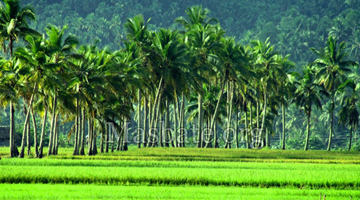 The Bicolanos are known for their love of coconut products. They are particularly known for their practice of using coconut milk or “gata” in their delectable cuisines or food recipes. This is not surprising, because coconut is the major crop in the region and it serves as its sunshine industry. Travelers and visitors to Bicol usually look forward to tasting its famous “Bicol Express”, among other coconut milk-mixed delicacies.
The Bicolanos are known for their love of coconut products. They are particularly known for their practice of using coconut milk or “gata” in their delectable cuisines or food recipes. This is not surprising, because coconut is the major crop in the region and it serves as its sunshine industry. Travelers and visitors to Bicol usually look forward to tasting its famous “Bicol Express”, among other coconut milk-mixed delicacies.
Unfortunately, in 2006, the province of Albay suffered the brunt of the damage caused by three strong typhoons (Caloy, Milenyo, and Reming). Those who were employed in the coconut agricultural sector were the hardest hit.
Determined to save the coconut industry in the area, the Bicol Consortium for Agriculture and Resources Research and Development (BCARRD) implemented a multi-agency program titled “Coconut-based S&T (science and technology) interventions for the rehabilitation of selected calamity-stricken areas in Albay”. The program aimed to restore/enhance the lost productivity of calamity-stricken coconut areas in selected communities in Albay.
Started in 2008, the program was funded by PCARRD. Assisting BCARRD in the implementation are a team of experts from the Bicol University, Central Bicol State University of Agriculture, and Philippine Coconut Authority-Albay Research Center. The program was also supported by the Provincial Government of Albay,
Based on PCARRD’s recent monitoring and evaluation activity, the program yielded major benefits. Among these is the improvement of nut and copra yield due to improved fertilization. Cocopeat, another output of the program, also proved effective as material for rehabilitation in some crops.
With the program, farms which were free from “cadang–cadang” were also identified and made as sources of planting materials. These farms were tagged for in situ conservation. The program also made possible the adoption of an integrated farming system in coco-based farm. This system involves the use of protective culture with native chicken production and organic farming. It also enabled the dissemination of helpful information through a farmers’ field day.
The program has also started video documentation and the production of a quick guide. Database on the inventory of evaluated local seed sources will soon be completed as reference for coconut farmers/entrepreneurs, policy makers, students, and researchers.
